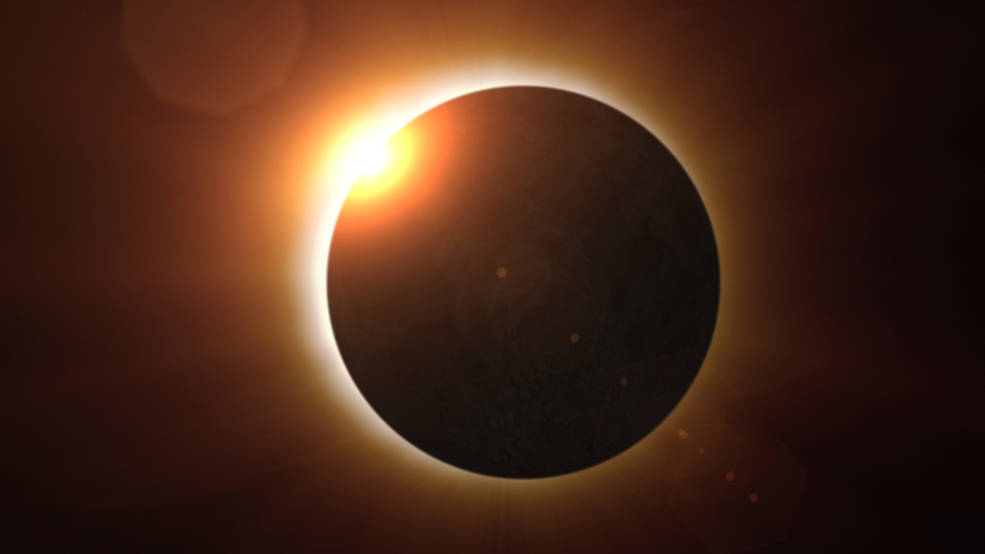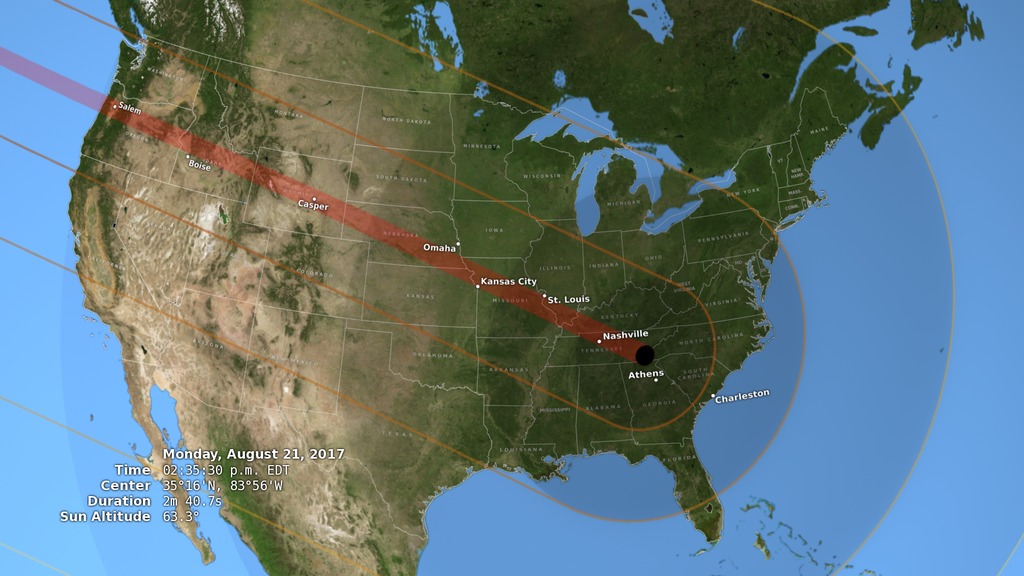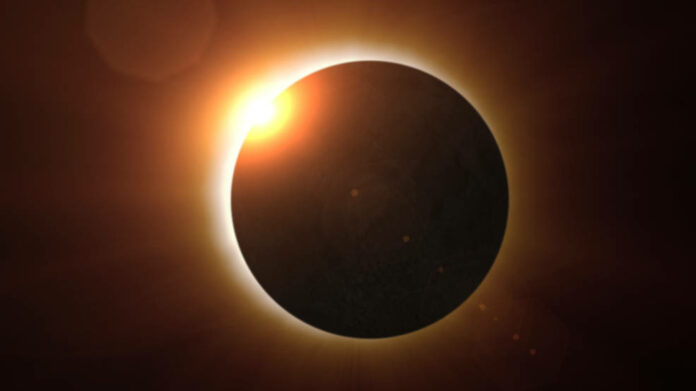On Monday, August 21, 2017, all of North America will be treated to an eclipse of the sun. Anyone within the path of totality can see one of nature’s most awe inspiring sights – a total solar eclipse. This path, where the moon will completely cover the sun and the sun’s tenuous atmosphere – the corona – can be seen, will stretch from Salem, Oregon to Charleston, South Carolina. Observers outside this path will still see a partial solar eclipse where the moon covers part of the sun’s disk.
NASA Television will carry it live from coast to coast from unique vantage points on the ground and from aircraft and spacecraft, including the International Space Station. Coverage will be featured during the live four-hour broadcast Eclipse Across America: Through the Eyes of NASA.
WATCH LIVE TOTAL SOLAR ECLIPSE BY NASA


Source: PBS
( Programming begins at noon EDT with a preview show hosted from Charleston, South Carolina. The main show begins at 1 p.m. and will cover the path of totality the eclipse will take across the United States, from Oregon to South Carolina. The program will feature views from NASA research aircraft, high-altitude balloons, satellites and specially-modified telescopes. It also will include live reports from Charleston, as well as from Salem, Oregon; Idaho Falls, Idaho; Beatrice, Nebraska; Jefferson City, Missouri; Carbondale, Illinois; Hopkinsville, Kentucky; and Clarksville, Tennessee. The Toshiba Vision screen in New York’s Times Square will broadcast the program live in its entirety to give the public a big-screen view of the eclipse. )
A solar eclipse occurs when the Moon passes between Earth and the Sun, thereby totally or partly obscuring the image of the sun for a viewer on Earth. A total solar eclipse occurs when the moon’s apparent diameter is larger than the sun’s, blocking all direct sunlight, turning day into darkness. Totality occurs in a narrow path across Earth’s surface, with the partial solar eclipse visible over a surrounding region thousands of kilometers wide.


The last time a total solar eclipse was visible across the entire contiguous United States was during the June 8, 1918, eclipse, and not since the February 1979 eclipse has a total eclipse been visible from anywhere in the mainland United States. The path of totality will touch 14 states, although a partial eclipse will be visible in all fifty states.The total area of the path of totality will be about 16% of the area of the United States, although most of this area is over the ocean and not actually over the United States. The event will touch land on the Oregon coast as a partial eclipse at 4:06 p.m. GMT (9:06 a.m. PDT) on August 21, and will end later that day as a partial eclipse along the South Carolina coast at about 6:44 p.m. GMT (2:44 p.m. EST). – By Wikipedia
Future total solar eclipses will cross the United States in April 2024 (12 states) and August 2045 (10 states), and annular solar eclipses—meaning the apparent size of the Moon is smaller than that of the Sun—will occur in October 2023 (9 states) and June 2048 (9 states).
Total solar eclipse offers scientists a unique opportunity to pursue a number of unique science and engineering problems. The very dark color of the moon can be used to calibrate X-ray imagers to properly record the ‘zero signal’ state, while the eclipse will block out the disk of the sun letting the light from the mysterious inner corona within 100 km of the solar photosphere shine into various experiments for detailed study.
Safety tips:
- Always inspect your solar filter before use; if scratched or damaged, discard it. Read and follow any instructions printed on or packaged with the filter.
- Always supervise children using solar filters.
- Stand still and cover your eyes with your eclipse glasses or solar viewer before looking up at the bright sun. After looking at the sun, turn away and remove your filter — do not remove it while looking at the sun.
- Do not look at the uneclipsed or partially eclipsed sun through an unfiltered camera, telescope, binoculars, or other optical device.
- Similarly, do not look at the sun through a camera, a telescope, binoculars, or any other optical device while using your eclipse glasses or hand-held solar viewer — the concentrated solar rays will damage the filter and enter your eye(s), causing serious injury.
- Seek expert advice from an astronomer before using a solar filter with a camera, a telescope, binoculars, or any other optical device. Note that solar filters must be attached to the front of any telescope, binoculars, camera lens, or other optics.
- If you are within the path of totality (https://go.nasa.gov/2pC0lhe(link is external)), remove your solar filter only when the moon completely covers the sun’s bright face and it suddenly gets quite dark. Experience totality, then, as soon as the bright sun begins to reappear, replace your solar viewer to look at the remaining partial phases.
- Outside the path of totality, you must always use a safe solar filter to view the sun directly.
- If you normally wear eyeglasses, keep them on. Put your eclipse glasses on over them, or hold your handheld viewer in front of them.
By NASA
Best Regards
TBU NEWS



